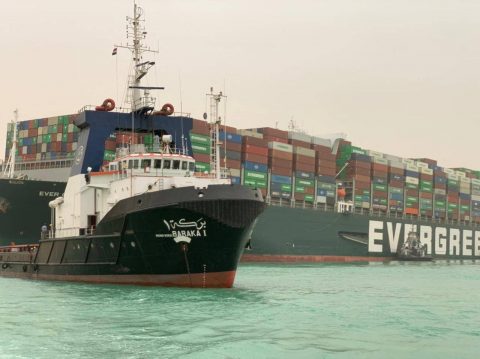Underinvestment In Water Sector Impedes Capacity To Combat Climate Crisis – Report
African News, Latest Headlines, News Around Africa Wednesday, March 23rd, 2022
(AFRICAN EXAMINER) – Gross underinvestment in services to get the water out of the ground and to those who need it most and untapped or poorly managed resources means millions of people don’t have enough safe, clean water to meet their daily needs, let alone face the impacts of the climate crisis, according to a new report by WaterAid and the British Geological Survey (BGS).
The report which was released by on Tuesday during the Heads of State meeting at the World Water Forum in Senegal, noted that groundwater which exists almost everywhere underground, in gaps within soil, sand and rock, has the potential to save hundreds of thousands of lives and be the world’s insurance policy against climate change.
The report also stated that groundwater could help communities cope not only with slow onset impacts like drought and irregular rainfall, but also provide resilience to rapid onset impacts like floods by ensuring safe water is available for all, including in schools and hospitals.
WaterAid and BGS produced a series of maps which chart current access to drinking water across Africa and drought resilience based on potential useable groundwater at national level, adding that most African countries have enough groundwater reserves to face at least five years of drought.
The report equally revealed that most countries in Africa have sufficient groundwater for people to not only survive but thrive in some cases for more than 50 years. This, according to the report includes Ethiopia and Madagascar – where only around half the population have clean water close to home – and large parts of Mali, Niger and Nigeria.
“Every African country south of the Sahara could supply 130 litres of drinking water per capita per day from groundwater without using more than 25 percent of the long-term average recharge, and most less than 10 percent. This means groundwater could provide a buffer against climate change for many years to come, even in the unlikely event that it doesn’t rain”, it added.
It also explained that while groundwater in sub-Saharan Africa is largely underused, in other parts of the world, mainly in south Asia overuse is rife. This, along with a lack of regulation, insufficient expertise and investment, often leads to mismanagement, contamination and pollution, with potentially devastating consequences:
“There are hotspots within individual countries where high abstraction around cities (for example, Addis Ababa in Ethiopia and Nairobi in Kenya) or in highly populated areas (for example, some parts of Nigeria), that can lead to depleting local groundwater, particularly aquifers with low storage, such as granites or volcanic rocks. Despite this, groundwater storage could still act as a buffer for one to two years of drought in these areas.
“In some areas, farming is responsible for up to 90 percent of all groundwater use. While crops flourish now, boreholes may run dry meaning crops will be affected later and people resort to drinking unsafe water to survive. For example, in Pakistan, 94 percent of pumped groundwater is for irrigation”, the report further disclosed.
In other regions, groundwater is naturally contaminated with arsenic and fluoride which can lead to illness or even death. For example, in India, arsenic contamination affects the northern states of Uttar Pradesh and Bihar, and West Bengal in the east. Several districts of Odisha are affected with high fluoride, iron and salinity and parts of central and Southeast India also show higher levels of nitrate and iron contamination.
In both south Asia and Africa, groundwater is vulnerable to pollution whether it be from fertilisers and pesticides from intensive farming, toxic chemicals from poorly regulated industry or sewerage from poorly managed sanitation. For example, a recent survey of boreholes in Ethiopia, Uganda and Malawi saw E. coli present in the water from 20 percent of rural handpumps, likely as a result of poorly sealed boreholes, allowing contaminated water from nearby toilets to drain into the pump intakes.
It also stressed the need to increase water and sanitation financing for marginalised communities through a fixed percentage of annual government budgets and increased international donor and private sector investment.
The report harped on the importance of agreeing at COP 27 that investment in responsible groundwater development and the knowledge, expertise, finance and institutional support this requires, is key to securing life-saving sustainable and safe water and sanitation for communities living on the frontline of the climate crisis.
“One of the ways to achieve this is to invest in better mapping and monitoring of the Earth’s subsurface to determine where good-quality groundwater is not only available but also extractable in a sustainable and economical way, to unlock its full potential”, the report stressed.
Chief Executive of WaterAid in the United Kingdom (UK), Tim Wainwright said their findings debunk the myth that Africa is running out of water. But the tragedy is that millions of people on the continent still do not have enough clean water to drink.
“There are vast reserves of water right under people’s feet, many of which are replenished every year by rainfall and other surface water, but they can’t access it because services are chronically underfunded.
“Tapping into groundwater would ensure millions have access to safe, clean water no matter what the climate crisis throws at them”, he said.
Similarly, WaterAid Nigeria Country Director, Evelyn Mere observed that the potential of groundwater can only be realised if we overcome the complex global problems around accessing it.
“Groundwater is an invisible resource, so tapping it, particularly in places where it is harder to get to, relies on knowledge about the geology beneath our feet. The quantity and quality of the groundwater also varies, and in some areas, we simply don’t know how much there is or its suitability.
“For example, it is difficult to find suitable locations to drill boreholes in parts of Enugu State in Nigeria because the underground rocks are made mainly of clay, which doesn’t hold much water. This means you need to search for areas where the rock does hold water, like sandstone. But such exploration is expensive”, she added.
Pockets of shallow groundwater in Enugu can also be contaminated and only available for part of the year. By contrast, it is much easier to find suitable locations to drill boreholes in Jigawa State, Nigeria, as the rocks underground store large quantities of water.
BGS Groundwater Resilience Lead, Prof. Alan MacDonald said groundwater is nature’s water reservoir, and a key resource to help the world adapt to climate change, adding that it is widely available, controlled by natural variation in geology, but is out of sight beneath our feet.
“To unlock the great potential of groundwater, we need the right investment in expertise to map groundwater, drill sustainable wells and find ways to maintain and manage water resources and services”, he further explained.
Karimatu, 17, from Adamawa, Nigeria, who is featured in the report, wakes up at 6am every day to collect water from a nearby stream, making at least three trips before school. Karimatu would like to be a doctor but fetching water early in the mornings affects her schoolwork. “Getting a steady water supply will make me happy” she told WaterAid.
Related Posts
Short URL: https://www.africanexaminer.com/?p=74959






















